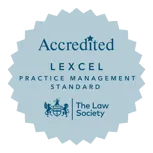Employer Responsibilities
Under the Control of Substances Hazardous to Health Regulations 2002, employers in England and Wales are legally required to conduct risk assessments to identify any harmful substances, including those substances that can cause cancer.
They should then take steps to either prevent or restrict an employee’s exposure to harmful substances, such as equipping them with personal protective equipment (more commonly referred to as PPE) and both monitoring and limiting how much time they spend working around known carcinogens.
Employers must also make sure that members of staff are aware of any harmful substances that have been identified in the workplace and inform them of what they can and should do to stay safe.
If an employer fails to take these steps and you’ve developed a cancer you believe may be linked to your working conditions, it may be – at least in part – the result of their negligence. Our expert team of Industrial Disease Solicitors are specialists in helping to people who have developed work related cancer receive the appropriate amounts of compensation.
If you have been diagnosed with occupational cancer, your employer is required by law to report this to the Health and Safety Executive (HSE) where there is an established causal link between the type of cancer which has been diagnosed and the hazards you have been exposed to through work.
In the event that you have been exposed to a hazard which has caused cancer, you may be entitled to compensation for the pain and suffering that you have been through as a result of this. With the right compensation settlement in place, you should be able to get back into the financial position you would have been in had you not developed cancer which could benefit both you and your family. If you’ve paid out costly medical fees and lost out on much needed earnings as a result of your illness, it’s only right that you should be compensated for this.
Additionally, if you find that your condition has left you with long term care and support needs and has impacted on your quality of life, you should have the means of accessing what you need and be able to live as full and independent a life as possible.

What is the Time Limit for Work Related Cancer Claims?
You need to start your claim within 3 years of the date you were diagnosed with cancer if you believe that it was connected to your working conditions. If you think you have a compensation claim, get in touch with our specialist Industrial Disease Solicitors today. We could deal with your claim on a No Win, No Fee basis.
Alternatively, if you have a loved one who has sadly died because of work related cancer, it is possible for you to claim compensation. There is a 3 year time limit which starts from their date of death, providing that they died within 3 years of their diagnosis. This is known as the limitation period. We would always recommend getting legal advice as soon as you have been diagnosed with work related cancer as the rules on limitation can be complex.
Is Asbestos Exposure The Same As Work Related Cancer?
Exposure to asbestos falls under the umbrella of work related cancer where a person has been diagnosed with cancer induced by asbestos – this is most commonly asbestos induced lung cancer.
For the most part, claims relating to asbestos exposure are similar work related cancer claims however it may be more difficult to figure out where a person has been exposed to asbestos. This is because it’s often the case that a person is exposed to asbestos and then only diagnosed with asbestosis or asbestos induced lung cancer decades later. In that time, they may have worked for several employers that may have exposed them to asbestos and so further investigations may be required for claims of this nature.
Prior to being banned in the UK, asbestos was commonly used in many products, including insultation material for buildings, boilers and pipes and car brakes and floor tiles. The importation, supply and use of all asbestos has been banned from the UK since 1999.
It’s important to note that asbestos is not considered to be harmful when in large pieces and undamaged. However, when damaged or disturbed in some way, asbestos can release smaller fibres that can be breathed in or swallowed. Breathing in asbestos can lead to asbestosis which then, in turn, leads to an increase in susceptibility to cancer. Asbestos has been officially classified as being carcinogenic to humans.
Those involved in demolition work, asbestos abatement, building repair and maintenance may be, or may have been, exposed to higher levels of asbestos as disturbing such materials releases fibres into the air.
The presence of asbestos in the environment does not always lead to exposure as you must actually come into contact with the fibres. You may be exposed by breathing, eating, or drinking the substance or by skin contact. Following exposure to any hazardous chemical, the adverse health effects that you may encounter depend on several factors, including:
- the amount to which you are exposed
- the duration of the exposure
- the form of asbestos
- whether or not you were exposed to any other chemicals
This is something that our expert Industrial Disease team can help you to identify in order to show how you were exposed to hazards in your workplace. Sadly, asbestos still kills around 5,000 workers in the UK every year. This is more people than the number of people recorded as being killed on the road each year. It’s estimated that around 20 tradesmen die each week as a result of past exposure to asbestos.
Although more commonly a problem which occurred in the past, asbestos remains an issue today as it can be present in any building which has been built or refurbished before the year 2000.
If you have been affected by work related cancer, please feel free to get in touch with our Industrial Disease Solicitors today and we’ll be happy to look at the details of your claim.. This is at no cost or obligation to you and we may even be able to act for you on a No Win, No Fee basis – just ask us for more details about this.
Our friendly and helpful team of experts can be contacted by telephone on 0808 258 4469 or, alternatively, you can request a call back here.











